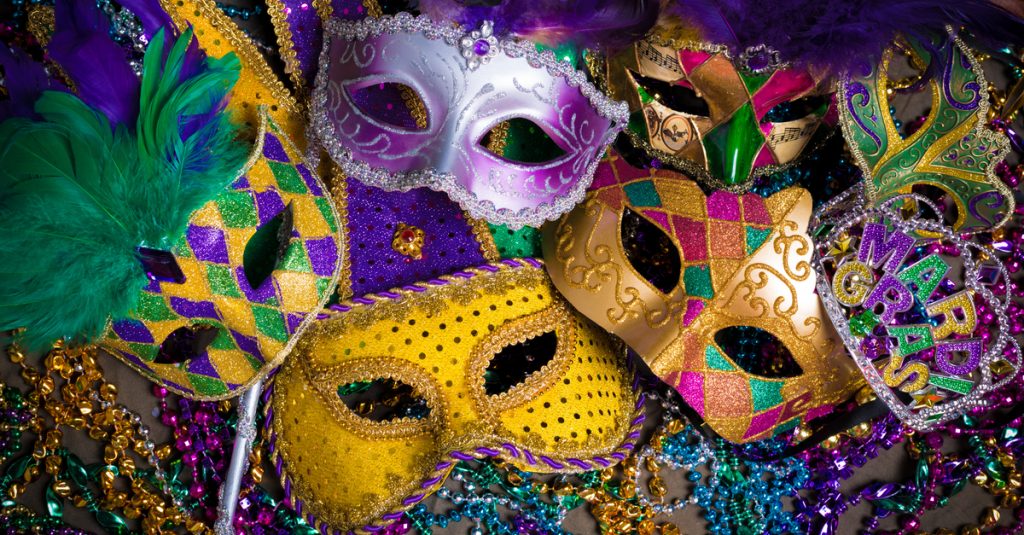Mardi Gras is the biggest and longest carnival celebration in North America and has been for over 200 years! Because of this long span of time, Mardi Gras has grown and changed for many reasons. With such a rich history, there is no doubt that are some facts even experts do not know about Mardi Gras!
1) Mobile, AL
Everyone associates the festival of Mardi Gras with the city of New Orleans, but any true fan of Mardi Gras can tell you that it started in Mobile! Mobile was established in 1702 as “Fort Louis de la Louisiane” by Jean Baptiste Le Moyne Sieur de Bienville, a French-Candian explorer. The following year in 1703 the tiny settlement celebrated America’s first Mardi Gras. New Orleans would not be established until 1718 and would not begin celebrating Mardi Gras until the 1730s! So, when it comes to Mardi Gras, Mobile was almost 30 years ahead in festivities.
2) Joe Cain
Joe Cain is the most significant person in the history of Mobile’s Mardi Gras! Not many people realize it, but without Joe Cain, Mardi Gras might not be the celebration is today, or the celebration of Mardi Gras would have died in the 1800s. After the Civil War, much of the South felt defeated, and didn’t feel like there was much for them to celebrate. Joe Cain decided to change all that in 1866. Cain dressed as an Indian chief, Chief Slackabamarinico, and started to parade through the streets of downtown. Cain was able to revive the spirit of Mardi Gras, which then spread back to New Orleans. Joe Cain has become an iconic symbol of Mobile, and the city even dedicates a whole day full of festivities to celebrate him! (To some, including me, Joe Cain Day is bigger than Fat Tuesday.)
3) Purple and Gold
Mobile’s official Mardi Gras colors are purple and gold. Mardi Gras is well known for its signature colors but many people do not know what these colors mean nor where they came from. The color purple represents justice and gold represents power. The colors were introduced by the Krewe of Rex, one of the oldest Krewes, which dates back to 1872. Today the colors are used everywhere the festival takes place, and represent many businesses and schools as well!
4) Masks
In some states, such as Louisiana, it is not only tradition, but a law to wear a mask on a float! The idea originated to get others to mingle with those outside of their social circle, and the idea is still widely popular for parties. And your face doesn’t have to be covered by a mask, but it can be painted! The law is actually specifically for people on a float. If you are walking in the parade you do not have to meet this requirement. This is the only time people are allowed to wear masks in public in Louisiana actually, as a law was passed decades that banned masks from being worn in public in an effort to keep out the KKK. These laws are not in all areas as Mobile does not have this requirement for float riders.
5) Krewes
Krewes are an essential part of Mardi Gras! Without krewes, Mardi Gras would probably not be the big celebration it is today. Krewes organize most of the festivities by hosting balls and parades. Every year the parades are different because the krewes change their theme, and no two parades will be the same as the krewes prevent that from happening by choosing different themes from each other as well. The Krewes also organize beautiful balls that members of the krewe can go to, and they sometimes sell tickets for outsiders to come as well, but you have to know people to get into other balls.
Mardi Gras has so much history that there are plenty of more interesting facts for you to learn about. Great places to do this would be to go to Mardi Gras museums such as the one in downtown Mobile. They have tons to tell you about the celebration, and even have old pieces of floats and outfits kings and queens of Mardi Gras wore! Definitely come out and celebrate one of the oldest festivals in the US, and why not do it in the city that started it all?
